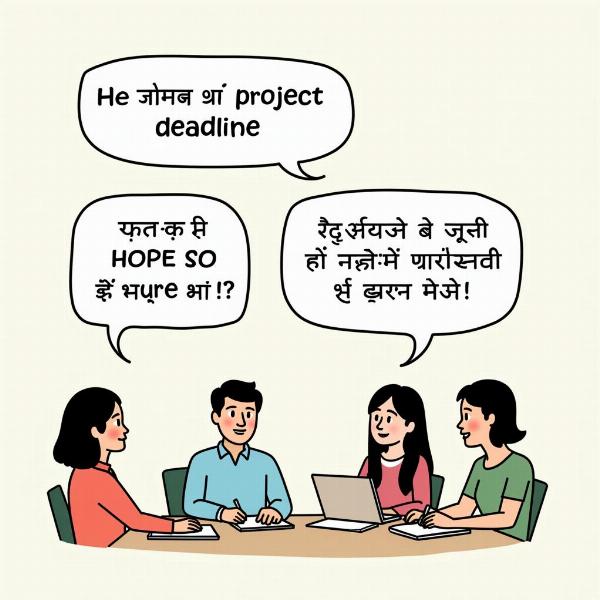Understanding the Hindi meaning of “hope so” isn’t as straightforward as finding a direct translation. It delves into the cultural nuances and the diverse ways Hindi speakers express hope and anticipation. While English often relies on the simple “hope so,” Hindi offers a richer palette of expressions, each carrying its own shade of meaning. Exploring these alternatives unveils a deeper understanding of Hindi and the cultural context surrounding expressions of hope.
Exploring “Hope So” in Hindi
The closest equivalent to “hope so” in Hindi often depends on the context. Sometimes, a simple “उम्मीद है” (ummeed hai) – meaning “there is hope” – suffices. However, to capture the subtle affirmation present in “hope so,” phrases like “शायद” (shayad – maybe) or “मुझे लगता है” (mujhe lagta hai – I think) combined with a positive verb can be used. For instance, “शायद हो जाए” (shayad ho jaaye – maybe it will happen) conveys a similar sentiment.
Delving into Hindi Expressions of Hope
Hindi offers a range of expressions to convey hope, beyond the direct equivalent of “hope so.” “आशा करता हूँ” (asha karta hoon – I hope) is a more formal expression, while “काश” (kash – I wish) carries a stronger sense of longing. “भगवान करे” (bhagwan kare – may God grant) expresses hope with a religious connotation. The choice of phrase depends on the situation, the level of formality, and the speaker’s personal style.
Cultural Context and “Hope So”
In Indian culture, expressions of hope are often intertwined with politeness and humility. Direct assertions are sometimes avoided, and hope is expressed with a degree of reservation. This cultural nuance influences how “hope so” is translated and understood in Hindi. For instance, instead of a direct “yes,” a Hindi speaker might say “देखते हैं” (dekhte hain – let’s see) or “कोशिश करेंगे” (koshish karenge – we’ll try), reflecting a cautious optimism while acknowledging potential challenges.
Practical Examples and Usage
Consider the following examples:
- English: “Will you be able to finish the project on time?” “Hope so.”
- Hindi: “क्या आप समय पर परियोजना पूरी कर पाएंगे?” “मुझे लगता है” (mujhe lagta hai – I think so) or “कोशिश करूँगा/करूँगी” (koshish karunga/karungi – I will try).
 Practical Examples of "Hope So" in Hindi
Practical Examples of "Hope So" in Hindi
Conclusion: Beyond a Simple Translation
“Hope so hindi meaning” is a journey into understanding the nuances of Hindi and its cultural context. While a direct translation exists, exploring the various ways Hindi speakers express hope offers a deeper appreciation for the language and its richness. By understanding these subtleties, you can communicate more effectively and build stronger connections with Hindi speakers.
FAQ
- What is the literal translation of “hope so” in Hindi? There isn’t a single literal translation, but “उम्मीद है” (ummeed hai) conveys a similar meaning.
- What are some other ways to express “hope so” in Hindi? Phrases like “शायद हो जाए” (shayad ho jaaye), “मुझे लगता है” (mujhe lagta hai), and “काश” (kash) can be used depending on the context.
- Why is understanding cultural context important when translating “hope so”? Indian culture influences how hope and anticipation are expressed, often with more reservation and politeness.
- Is it appropriate to use “hope so” in formal Hindi conversations? While understandable, more formal alternatives like “आशा करता हूँ” (asha karta hoon) are generally preferred.
- How can I learn more about Hindi expressions of hope? Immersing yourself in Hindi conversations, movies, and literature can enhance your understanding of these nuances.
Meaning-Hindi.in is your trusted partner for accurate and culturally sensitive Hindi translation services. We specialize in various translation domains, including business, legal, technical, website localization, and educational materials. Whether you need quick translations or specialized expertise, our team of expert linguists is ready to assist you. Contact us today for a personalized quote via email at [email protected] or call us at +91 11-4502-7584. Meaning-Hindi.in is committed to bridging the language gap and facilitating seamless communication.